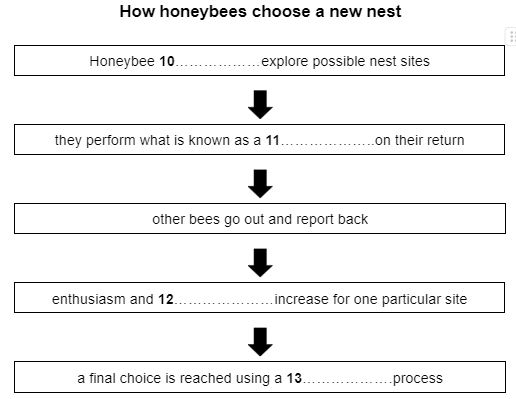Contoh soal IELTS Reading banyak dicari terutama bagi seseorang yang masih pemula dalam test IELTS. Reading menjadi salah satu sesi yang cukup menantang karena kita harus jeli dengan bacaan maupun pertanyaanya.
Bagaimana sih contoh soal IELTS Reading? Lister berikan beberapa contoh soal buat kamu.
Jika ingin belajar contoh soal ielts lainnya lengkap dengan cara cepat mengerjakannya bisa mengikuti kursus persiapan IELTS Reading bersama Lister!
Pertanyaan Umum tentang IELTS Reading Session
Ada beberapa pertanyaan terkait sesi reading di IELTS. Seperti berapa soal yang akan diujikan dan juga berapa waktu yang diberikan untuk menyelesaikan reading di IELTS? mari Lister jelaskan.
1. Soal reading IELTS ada berapa?
Total soal yang diberikan dalam IELTS reading adalah 40 soal yang harus kamu selesaikan.
Tipe-tipe soal umum yang biasanya ada dalam soal reading adalah
- multiple choice (pilihan ganda)
- true/false/not given
- matching information
- sentence competion
- matching heading
- summary completion
- flowchart completion
2. Berapa menit reading IELTS?
Berapa waktu yang diberikan untuk menyelesaikan soal-soal reading IELTS? kamu bisa mengerjakan reading IELTS dengan waktu 60 menit.
Sehingga fokuskan pada jenis pertanyaannya agar bisa menjawab soal dengan cepat dan tepat.
Nah untuk langkah awal, memahami reading IELTS adalah hal baik. Selanjutnya silakan pelajari contoh soal reading IELTS untuk persiapan menghadapi ujian yang sebenarnya.

Contoh soal IELTS Reading
Berikut Lister berikan beberapa contoh soal IELTS reading yang bisa membantumu belajar IELTS di rumah.
1. Contoh Soal reading IELTS TRUE/FALSE/NOT GIVEN
You should spend about 20 minutes, which are based on Reading Passage 1 below.



Questions 1-6 :
- Commuters are often compared favourably with workers ant : TRUE / FALSE / NOT GIVEN
- Some ants within a colony have leadership roles. : TRUE / FALSE / NOT GIVEN
- Forager ants tell each other how far away the food source is. : TRUE / FALSE / NOT GIVEN
- Forager ants are able to react quickly to a dangerous situation. : TRUE / FALSE / NOT GIVEN
- Termites mounds can be damaged by the wind. : TRUE / FALSE / NOT GIVEN
- Termites repair their mounds without directly communicating with each other. : TRUE / FALSE / NOT GIVEN
Pembahasan :
Coba cek pembahasan dari soal-soal IELTS benar/salah di atas.
- Commuters are often compared favourably with worker ants.
Jawaban: FALSE
Pembahasan: Dalam teks disebutkan bahwa perbandingan antara pekerja kota (commuters) dan semut pekerja adalah analogi yang umum, tetapi cenderung negatif, tidak positif: “marching like worker ants might be a common simile for city commuters, but it’s a damning, not positive, image.” - Some ants within a colony have leadership roles.
Jawaban: FALSE
Pembahasan: Teks menjelaskan bahwa dalam koloni semut tidak ada satu semut pun yang mengambil keputusan atau memberikan perintah: “there’s no one ant making decisions or giving orders.” - Forager ants tell each other how far away the food source is.
Jawaban: NOT GIVEN
Pembahasan: Teks menjelaskan bahwa semut forager memberikan sinyal “go out” dengan menyentuh semut lainnya saat kembali ke sarang, tetapi tidak disebutkan bahwa mereka memberi informasi tentang jarak sumber makanan. - Forager ants are able to react quickly to a dangerous situation.
Jawaban: TRUE
Pembahasan: Teks menyebutkan bahwa jika ada ancaman, seperti kadal lapar, semut yang kembali tanpa makanan mengirimkan sinyal “don’t go out” kepada semut lain yang sedang menunggu: “a rush of ants returning without food sends waiting reserves a ‘Don’t go out signal.” - Termite mounds can be damaged by the wind.
Jawaban: NOT GIVEN
Pembahasan: Tidak ada informasi dalam teks yang menyebutkan bahwa gundukan rayap bisa rusak oleh angin. Contoh kerusakan yang diberikan adalah perubahan sirkulasi udara di dalam gundukan. - Termites repair their mounds without directly communicating with each other.
Jawaban: TRUE
Pembahasan: Teks menjelaskan bahwa rayap tidak berkomunikasi secara langsung saat memperbaiki gundukan mereka. Mereka hanya bereaksi terhadap perubahan di lingkungan dan mengikuti apa yang telah dilakukan rayap sebelumnya: “They simply sense changes in their environment… and drop a grain of soil… Slowly, without any kind of direct decision-making, a new wall is built.”
Baca juga: Yuk Cari Tahu Definisi dan Penjelasan Lengkap IELTS Reading Score
2. Contoh soal Short Answer Questions
Choose NO MORE THAN TWO WORDS from the passage for each answer.
Whale Strandings
Why do whales leave the ocean and become stuck on beaches?
| When the last stranded whale of a group eventually dies, the story does not end there. A team of researchers begins to investigate, collecting skin samples for instance, recording anything that could help them answer the crucial question: why? Theories abound, some more convincing than others. In recent years, navy sonar has been accused of causing certain whales to strand. It is known that noise pollution from offshore industry, shipping and sonar can impair underwater communication, but can it really drive whales onto our beaches? In 1998, researchers at the Pelagos Cetacean Research Institute, a Greek non-profit scientific group, linked whale strandings with low-frequency sonar tests being carried out by the North Atlantic Treaty Organisation (NATO). They recorded the stranding of 12 Cuvier’s beaked whales over 38.2 kilometres of coastline. NATO later admitted it had been testing new sonar technology in the same area at the time as the strandings had occurred. ‘Mass’ whale strandings involve four or more animals. Typically they all wash ashore together, but in mass atypical strandings (such as the one in Greece), the whales don’t strand as a group; they are scattered over a larger area. For humans, hearing a sudden loud noise might prove frightening, but it does not include mass fatality. For whales, on the other hand, there is a theory on how sonar can kill. The noise can surprise the animal, causing it to swim too quickly to the surface. The result is decompression sickness, a hazard human divers know all too well. If a diver ascend too quickly from a high-pressure one, gases dissolved in blood and tissue expand and form bubbles. The bubbles block the flow of blood to vital organs, and can ultimately lead to death. Plausible as this seems, it is still a theory and based on our more comprehensive knowledge of land-based animals. For this reason, some scientists are wary. Whale expert Karen Evans is one such scientist. Another is Rosemary Gales, a leading expert on whale strandings. She says sonar technology cannot always be blamed for mas strandings. “It’s a case-by-case situation. Whales have been stranding for a very long time pre-sonar.” And when 80% of all Australian whale strandings occur around Tasmania, Gales and her team must continue in the search for answers. But that is not all. physics, it appears, can help with the when as well as the where. The ocean is full of bubbles. Larger ones rise quickly to the surface and disappear, whilst smaller ones – called microbubbles can last for days. It is these that absorbs whale ‘clicks”. “Rough weather generates more bubbles than usual,” James adds. So, during and after a storm, echolocating whales are essentially swimming blind. Last year was a bad one for strandings in Australia. Can we predict if this or any other year – will be any better? Some scientists believe we can. They have found trends which could be used to forecast ‘bad years’ for strandings in the future. In 2005, a survey by Klaus Vanselow and Klaus Ricklefs of sperm whale strandings in the North Sea even found a correlation between these and the sunspot cycle, and suggested that changes in the Earth’s magnetic field might be involved. But others are sceptical. “Their study was interesting… but the analysis they used were flawed on a number of levels,” says Evans. In the same year, she co-authored a study on Australian strandings that uncovered a completely different trend. “We analysed data from 1920 to 2002… and observed a clear periodicity in the number of whales stranded each year that coincides with a major climatic cycle. To put it more simply, she says, in the years when strong westerly and southerly winds bring cool water rich in nutrients closer to the Australia coast, there is an increase in the number of fish. The whales follow. So what causes mass strandings? “It’s probably many different components,” says James. And he is probably right. But the point is we now know what many of those components are. When animals beach next to each other at the same time, the most common cause has nothing to do with humans at all. “They’re highly social creatures,” says Gales. “When they mass strand it’s complete panic and chaos. If one of the group strands and sounds the alarm, others will try to swim to its aid, and become stuck themselves.” Activities such as sonar testing can hint at when a stranding may occur, but if conversationists are to reduce the number of strandings, or improve rescue operations, they need information on where strandings are likely to occur as well. With this in mind, Ralph James, physicist at the University of Western Australia in Perth, thinks he may have discovered why whales turn up only on some beaches. In 1986 he went to Augusta, Western Australia, where more than 100 false killer whales had beached. “I found out from chatting to the locals that whales had been stranding there for decades. So I asked myself, what is it about this beach? From this question that James pondered over 20 years ago, grew the university’s Whale Stranding Analysis Project. Data has since revealed that all mass strandings around Australia occur on gently sloping sandy beaches, some with inclines of less than 0.5%. For whale species that depend on an echolocation system to navigate, this kind of beach spells disaster. Usually, as they swim, they make clicking noises, and the resulting sound waves are reflected in an echo and travel back to them. However, these just fade out on shallow beaches, so the whale doesn’t hear an echo and it crashes onto the shore. |
- What do researchers often take from the bodies of whales?
- What do some industries and shipping create that is harmful to whales?
- In which geographical region do most whale strandings in Australia happen?
- Which kind of whale was the subject of a study in the North Sea?
Pembahasan :
- What do researchers often take from the bodies of whales?
Jawaban: Skin samples.
Pembahasan: Teks menyebutkan bahwa tim peneliti mengumpulkan “skin samples,” atau sampel kulit, dari tubuh paus untuk membantu menjawab pertanyaan mengapa strandings terjadi. - What do some industries and shipping create that is harmful to whales?
Jawaban: Noise pollution.
Pembahasan: Teks menyebutkan bahwa polusi suara (noise pollution) dari industri lepas pantai, pengiriman, dan sonar dapat mengganggu komunikasi bawah laut paus. - In which geographical region do most whale strandings in Australia happen?
Jawaban: Tasmania.
Pembahasan: Teks menyebutkan bahwa 80% dari semua strandings paus di Australia terjadi di sekitar Tasmania. - Which kind of whale was the subject of a study in the North Sea?
Jawaban: Sperm whale.
Pembahasan: Teks menyebutkan bahwa studi oleh Klaus Vanselow dan Klaus Ricklefs di Laut Utara pada tahun 2005 fokus pada paus sperma (sperm whale).
3. flowchart completion
Complete the flow-chart below.

Jawaban :
- scouts
- waggle dance
- support
- democratic
Itu beberapa contoh tes IELTS reading yang bisa kamu pahami. Dalam reading IELTS memiliki banyak jenis tipe soal, sehingga untuk mengerjakannya kamu perlu mengetahui jenis-jenis soal dan tips untuk menjawabnya.
Artikel lainnya: 10 Sumber Bacaan Latihan IELTS Reading, Pahami Topiknya
Dapatkan cara cepat jawab soal IELTS bersama Lister!
Lister bantu kamu persiapakan diri hadapi IELTS dengan maksimal di kursus IELTS Reading
Di kelas ini kamu tidak hanya dibantu menyelesaikan soal-soal IELTS namun juga bagaimana cara cepat mengerjakannya.
Bersama tutor terbaik, bantu kamu belajar IELTS dengan maksimal dan efektif. Kelas dilakukan secara online dengan jam belajar fleksibel dan ukuran kelas yang dapat disesuaikan.
Kamu juga bisa mengikuti kelas garansi untuk dapatkan skor IELTS sesuai target yang kamu inginkan, Lister menyediakan pertemuan mulai dari 2x sampai dengan 80x pertemuan. Kamu bisa memilihnya
Mumpung ada promo, maksimalkan persiapan IELTS kamu bersama Lister. Promo mulai dari 10-50% OFF, yang bisa kamu cek melalui Instagram Lister!
Sumber gambar sampul: Freepict












